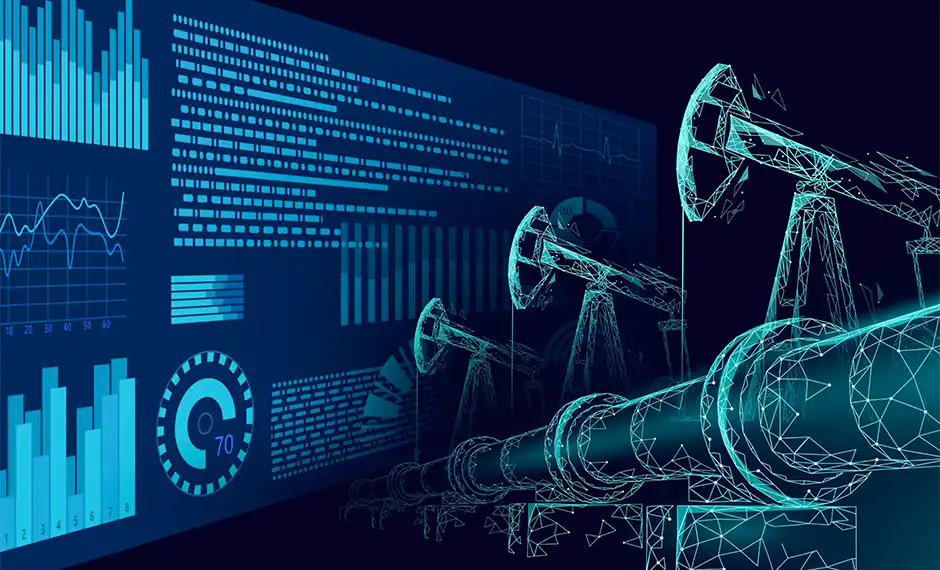DevOps Engineering
Leverage DevOps to seamlessly integrate development and operations, ensuring automation, scalability, and efficiency for a competitive edge in the digital realm.
Leverage DevOps to seamlessly integrate development and operations, ensuring automation, scalability, and efficiency for a competitive edge in the digital realm.
Organizations that have adopted DevOps successfully have experienced numerous benefits including faster delivery, better quality, reduced complexity, greater scalability, availability, stability and automation.
TenUp, we have helped countless businesses embrace DevOps effectively. We will guide you through the exciting world of infrastructure as code, leveraging cloud-native technologies to optimize scalability, reduce risks, and enhance your overall efficiency. With our expert guidance, you can focus on what you do best while we handle the technical heavy lifting.

LSet up monitoring and alerts to track the health, performance and security of your infrastructure.
Configuration and management of the software on your infrastructure components including deployment, version control, and consistency across infrastructure.
Automate the provisioning of infrastructure resources, such as virtual machines, containers, networks, and storage.
Implementing tools and processes to ensure the infrastructure is compliant with industry regulations and best practices.
Designing the infrastructure architecture that aligns with your requirements, and creating a blueprint for your infrastructure setup.
We help you implement horizontal and vertical scaling strategies to ensure your systems can handle varying demands.

Automate build, test, and deployment processes, reducing manual effort and ensuring consistency.
Integrate with version control systems to trigger builds automatically on code changes
Design and implement end-to-end CI/CD pipelines tailored to your development workflow
Ensure each code change is tested thoroughly before deployment by integrating automated testing into your pipeline.
Automating the provisioning of development, staging and production environments through IaC tools like Terraform or AWS CloudFormation.
Incorporate deployment approval workflows and release management to ensure controlled and reliable deployments.
Containerize applications using technologies like Docker, enabling consistent deployment across different environments.
Orchestrate containerized applications using tools like Kubernetes or Docker Swarm for scalability and resilience.
Minimize downtime and optimize resource utilization through container scheduling and load balancing
Implement rolling updates and rollbacks to ensure non-disruptive deployments
Integrate container registries for secure storage and distribution of container images ensuring secure access to artifacts.
Implement service mesh frameworks to provide advanced networking capabilities for containerized applications.
Define and manage configuration settings for various infrastructure components.
Use automation tools and scripts to automate deployment across environments to ensure consistency and reduce human errors.
Version control and track changes to configurations for auditability and traceability.
Implementing configuration drift detection and remediation to maintain desired state configurations.
Automate software installations and updates using configuration management tools like Ansible or Puppet.
Integrate with monitoring systems to detect and respond to configuration-related incidents promptly.
Set up monitoring and alerting systems to track infrastructure and application performance.
Implement proactive monitoring to identify and address potential issues before they impact users.
Establish incident management processes and workflows to ensure timely resolution of incidents.
Enable log aggregation and analysis to identify patterns and troubleshoot issues effectively.
Implement automated anomaly detection mechanisms to quickly identify and flag deviations from normal behavior in proactive monitoring
Conducting regular performance and health checks to optimize system performance and availability, ensuring smooth operations.
Infrastructure as Code is an approach that allows infrastructure components to be defined and managed through code. It brings automation, consistency, scalability, and version control to infrastructure provisioning and management, enabling faster and more reliable deployments.
A CI/CD pipeline automates the build, test, and deployment processes, enabling faster and more frequent releases of software. It improves collaboration, reduces errors, ensures consistent builds, and allows for rapid feedback and iteration, ultimately accelerating time-to-market.
Containerization enables applications and their dependencies to be packaged into isolated containers, providing consistency and portability. Orchestration platforms like Kubernetes manage containerized applications, facilitating scaling, load balancing, and service discovery, leading to efficient and resilient deployments. TenUp leverages technologies such as Docker and Kubernetes to ensure consistent and scalable data processing environments.
Proactive incident management employs monitoring, alerting, and analysis to detect and address potential issues before they impact users. It enables timely resolution, minimizes downtime, optimizes system performance, and enhances overall reliability and user experience.
Organizations leverage predictive analytics techniques and machine learning algorithms to analyze historical data and patterns, enabling the identification of potential incidents before they occur. Predictive analytics helps in identifying anomalies, predicting performance degradation, and proactively taking preventive actions.
Configuration management ensures systems and applications remain properly configured, compliant, and secure. It minimizes drift, enables efficient change management, reduces human errors, and supports troubleshooting by maintaining desired configuration states and ensuring system stability.
Our team has expertise in almost every DevOps Technologies.
Engage in an initial conversation to discuss your needs, objectives, and technology, and receive custom solutions aligned with your organization's requirements.
Present a customized solution matching your objectives. Team structure discussions ensure smooth collaboration and successful implementation.
After solution finalization and team structuring, implementation begins. Our experts work closely with you, ensuring clear communication, transparent progress, and performance insights.